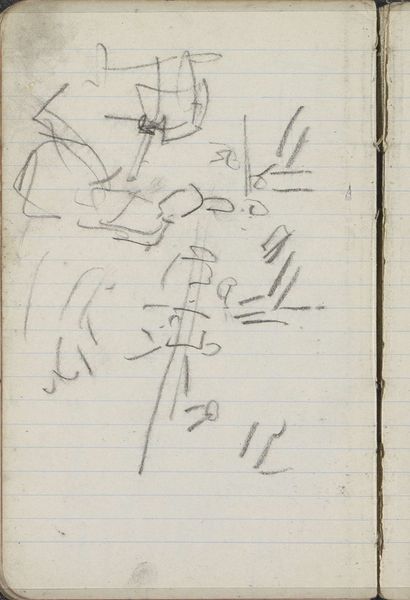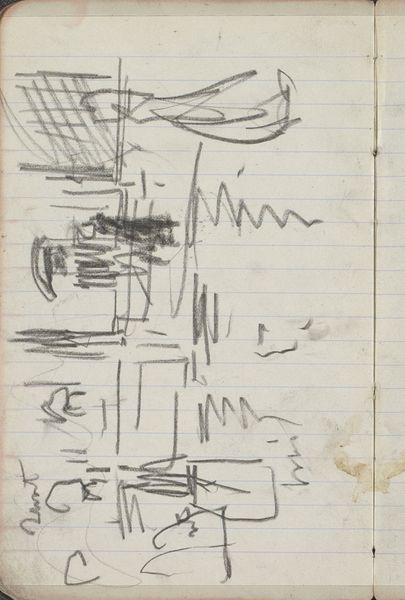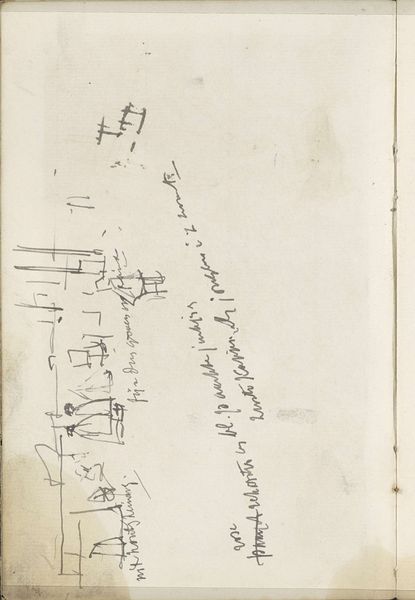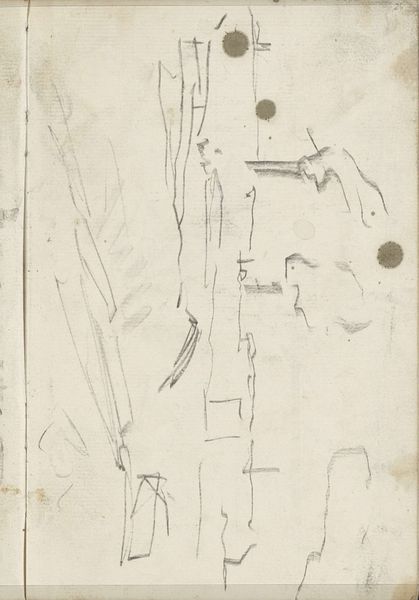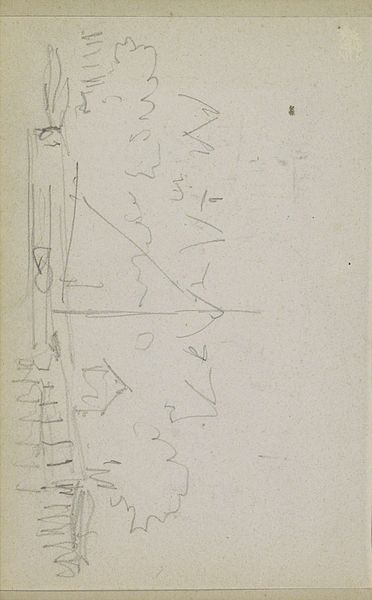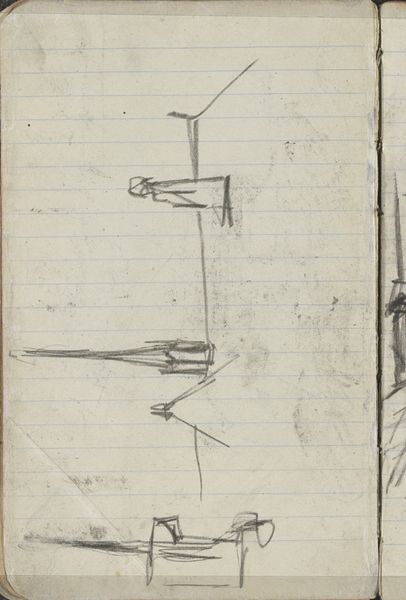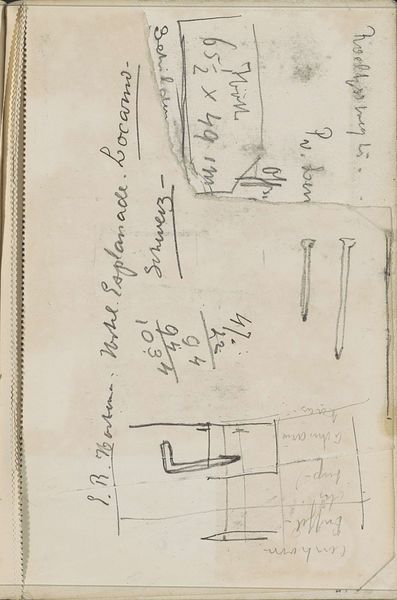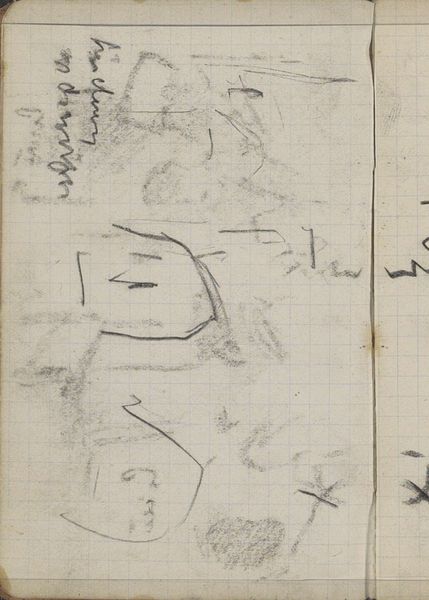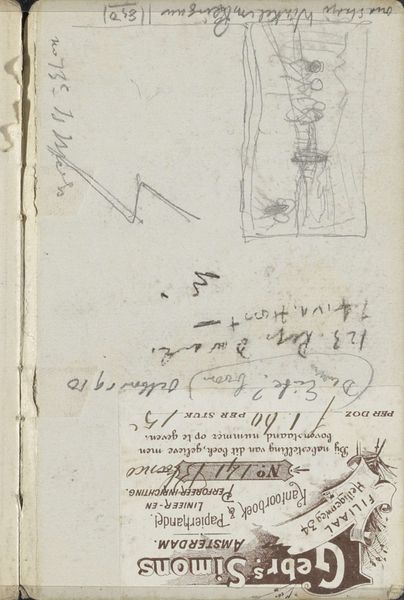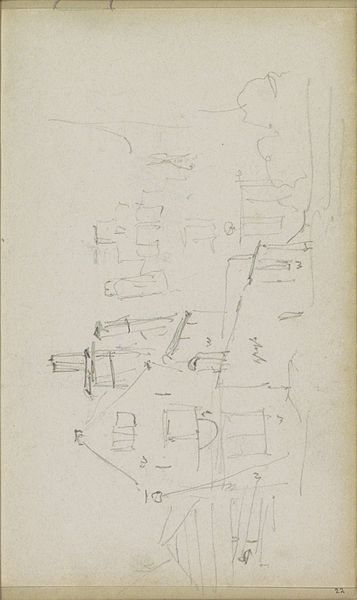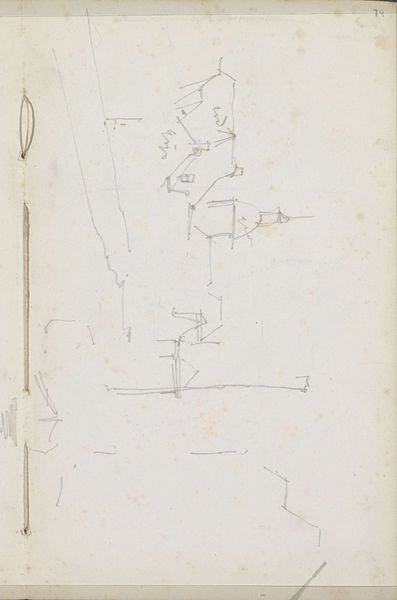
drawing, paper, pencil
#
drawing
#
paper
#
geometric
#
pencil
#
abstraction
Copyright: Rijks Museum: Open Domain
Curator: Here we have George Hendrik Breitner’s “Studie, mogelijk van een gebouw,” which translates to “Study, possibly of a building,” created in 1893. It’s a pencil drawing on paper, currently held in the Rijksmuseum collection. Editor: Immediately, I'm drawn to the provisional, almost ephemeral nature of the work. The soft graphite lines on the lined paper… it feels intensely intimate, like a peek into the artist's private thoughts on architecture, perhaps his way of consuming his subject? Curator: I agree, the intimate scale is significant. It provides insight into Breitner's approach during a time when urban environments were rapidly transforming, especially for working classes. We can frame it alongside Haussmann's redesign of Paris as the city transformed. This piece captures a transient moment and suggests social, personal and aesthetic changes. Editor: That makes me consider the actual building, or possible building represented here. If this study, this collection of raw materials, was brought into reality, what social and economic structures would influence the project? What kind of labour went into this pencil, paper, and building? Curator: Considering Breitner's involvement with the Amsterdam Impressionists and their focus on depicting everyday life and the quickly modernizing Dutch society, we can contextualize his choice of geometric shapes to explore urban space in that period of intense flux. Abstraction allows us a glimpse into his world, but doesn't directly commit him, thus suggesting broader themes such as anxiety, gender and identity as themes. Editor: True, and this approach asks crucial questions about the division between art and craft. How the raw physical materials, cheap paper, simple graphite are in constant conversation. And also it emphasizes the performative aspect of creation. A study such as this reminds the viewer that the architectural and emotional landscape relies on process. Curator: Absolutely. The material's disposability challenges traditional notions around what's worth preserving or commemorating through art. Furthermore, it provides an understated, raw account of that period of industrial advancement in the Dutch artistic environment. Editor: So, what appears to be a sketch is, in reality, loaded with intentionality and is worth reflecting on through social means of production. Curator: It offers a fleeting snapshot, inviting viewers to meditate on social context, and on the transient moments shaping artistic practice, material choices, and, most crucially, identity in that time.
Comments
No comments
Be the first to comment and join the conversation on the ultimate creative platform.
